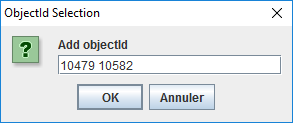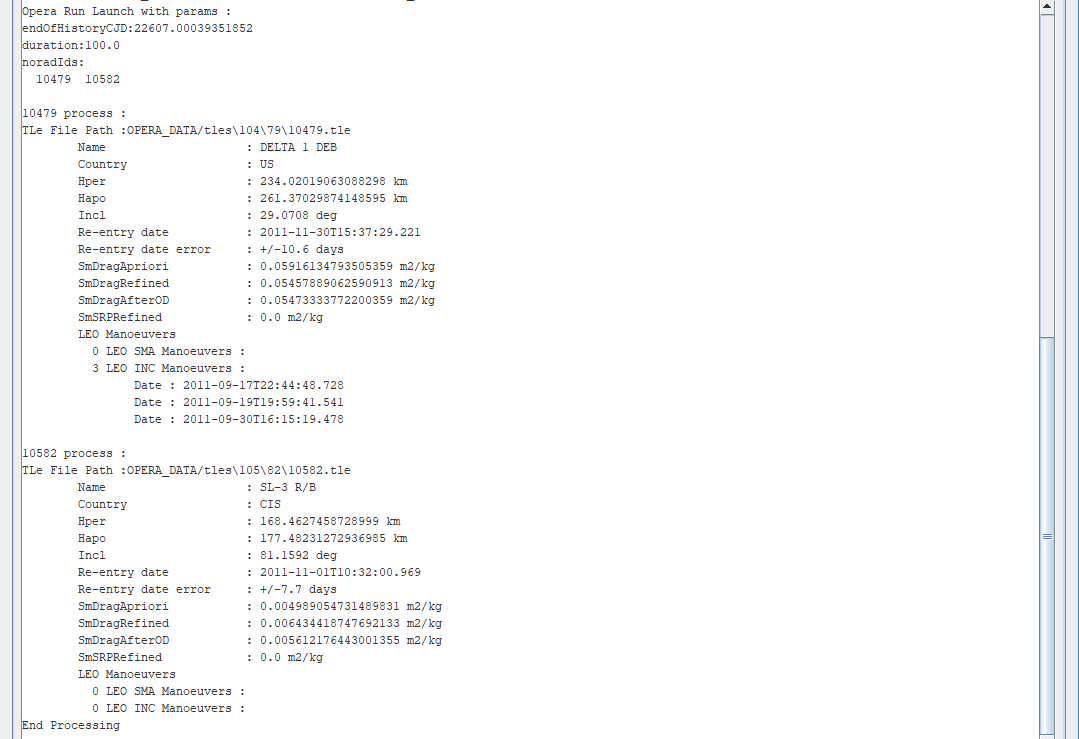Quick start
OPERA proposes a lot of options and configurations. Anyway, in order to allow starting first computations very quickly, the OPERA GUI proposes many parameters set to default values.
Launch the main GUI
To launch the GUI you only have to double click on Windows systems or type :
java -jar opera-xx.x-jar-with-dependencies.jar
First time the GUI is launched, a specific directory (OPERA_DATA/) with its sub-directories (context/, outputrun/, results/, work/ and AdditionalPatriusData/) will be created if it does not already exist. These directories will be used to store data/results working files. Note that the name of these directories may be changed (see this specific page on properties files).
Mandatory data
If many data are already included in the jar file (solar activity, force models data, ...), no TLE data are directly provided. So the user will have to get it for example via the [Space-Track site]. By default, these TLE will be stored: in the tles/ subdirectory with the following organization: XXX/YY/XXXYY.tle file where XXX are the first three digits of the NoradId; YY are the last two digits of NoradId. The .tle contains history of TLE for this NoradId; see this example below ..
ERS 5 (Decayed 2011-11-11) 1 00579U 63014B 10315.35410215 .00050969 00000-0 82126-2 0 1077 2 00579 084.5011 267.0530 1931516 238.6291 101.2672 11.27537314522093 ERS 5 (Decayed 2011-11-11) 1 00579U 63014B 10315.88649764 .00051504 00000-0 82497-2 0 1086 2 00579 084.5012 266.8438 1931883 237.5999 102.3933 11.27595044522151 ... ERS 5 (Decayed 2011-11-11) 1 00579U 63014B 11314.41371939 .16010326 46685+0 20567+0 0 5309 2 00579 084.2585 103.8765 0162025 156.5631 204.1730 15.54826774565617
So, in order to start easily, some files are available as examples (to put in the OPERA_DATA/tles directory) → here ←
Select Norad Ids
Based, for example, on the data given in the previous downloaded file, we can select which orbital objects to study. Different ways of selecting them are available (see this specific page on the topic) but, as an example, we will use the simplest one, giving directly the Norad Ids by clicking on the Add button. We will enter the following integer numbers separated by blank characters:
By clicking on OK, the two objects are well selected and recognized (because files exists int the tles/ directory!) as we can see it:
Computation
Now, it will be possible to start a computation by clicking on the ![]() button. Unfortunately, the computation exits in error status with such a message:
button. Unfortunately, the computation exits in error status with such a message:
- TLEs was found in the requested time window. The last available date is xxxxx days too old
This error is due to the fact that, by default, the "End of history" date is the current date and is too far from the actual reentry dates of these objects. So, in order to get results, we will have to change this date, entering this one: 24/11/2011 00h00m00s
Clicking again on the ![]() button will then give these output results:
button will then give these output results:


